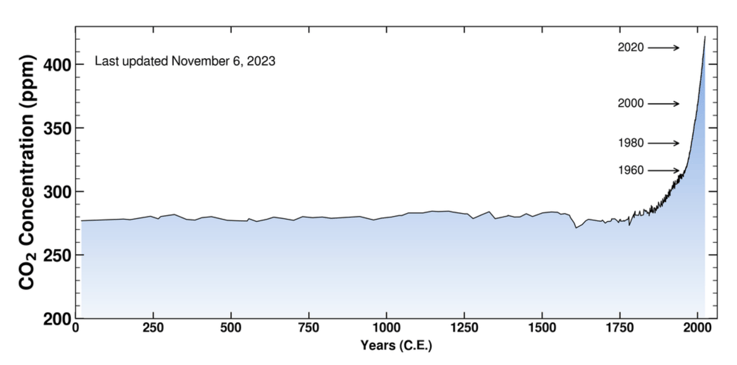The Staggering Price of Video (Real Cost)
If digital technology were a country, it would have 2 to 3 times the ecological footprint of France.
ENVIRONMENTAL IMPACT OF VIDEO
4/18/20232 min read

Technology is Not as Virtual as You Think!
It's ecological footprint is all too real. Digital pollution, includes the following:
Greenhouse gas emissions
Overuse of water resources
Contamination of natural environments
Damage to biodiversity
E-waste generation etc.
Here are a few facts to put things in perspective:
If digital technology were a country, it would have 2 to 3 times the ecological footprint of France. [Source: greenit.fr]
Technology is responsible for 4% of global greenhouse gas (GHG) emissions.
It is projected to reach 23% around 2030.
Data centers are huge buildings, they occupy very large surface areas (the largest data center in the world, in China, has a surface area of 1 million square meters!).
Highly energy-intensive, a 10,000 sqm data center consumes on average the equivalent of a city of 50,000 inhabitants.
40% of this energy consumption is used just to cool them.
In 2019 Google (You Tube) used more electric power than entire countries, including ones like Sri Lanka and Zambia.
Google’s electricity use is doubling every three years or so.
Source: https://www.wedia-group.com/blog/what-is-the-environmental-impact-of-digital-technology
The Environmental Impact of Video Streaming
Digital usage is soaring and dominated by online videos. Netflix, YouTube and Amazon Prime dominate this market, accounting for more than half of video streaming traffic worldwide.
When it comes to gaming, one console, PlayStation, consumes (2.7%) of global traffic alone.
So to the facts:
Video streaming consumption emits 300 million tonnes of CO₂ worldwide every year. This is equivalent to the digital pollution of a country like Spain or even 1% of global emissions.
Video streaming services, such as Netflix, Amazon Prime etc. emit as much greenhouse gas as Chile.
All this data produced by video streaming consumes large amounts of electricity, which comes largely from fossil fuels (85% of the global energy mix).
Energy used in streaming one film on Netflix consumes the same energy that makes 60 cups of hot tea!
A two-hour film pollutes as much as a 45-minute car drive.
The annual energy consumption of IT infrastructure is constantly at least 2,000 TWh, 5% of the global electricity use. Projections suggest that we will reach 10% by 2030.
Source: https://www.wedia-group.com/blog/what-is-the-environmental-impact-of-digital-technology
https://globalbar.se/2023/01/how-bad-is-video-streaming-for-the-climate/
https://keelingcurve.ucsd.edu/
https://globalbar.se/2023/01/how-bad-is-video-streaming-for-the-climate/
This is what makes BECTing (video reduction) a green technology, that aims at tackling the growth problem (of video usage) proactively, by making high quality videos consume only 20% of the resources they do now. It's a bold solution to a pressing problem!


Contact us
Whether you have a request, a query, or want to work with us, use the form below to get in touch with our team.


Location
457 Elizabeth St
Surrey Hills, NSW 2010
Contacts
+61 (0) 2 8530 0422
n@nahla-bect.com


Proudly ISO 9001:2015 Certified
